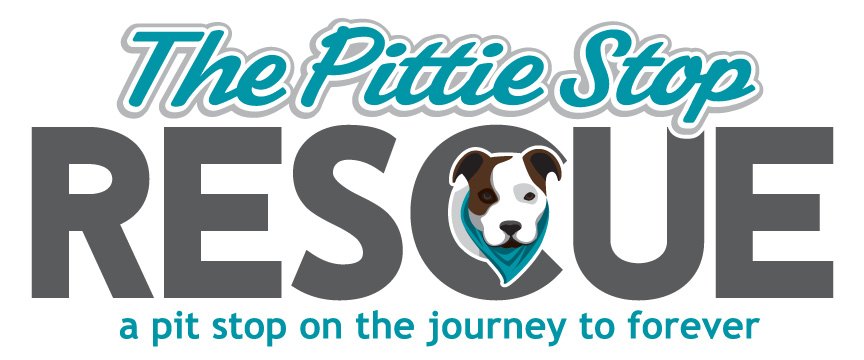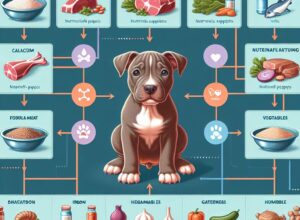
-
Understand the nutritional needs of pitbull puppies and how they change with the seasons.
-
Discover how to adjust your pitbull puppy’s diet in spring for increased activity and allergy management.
-
Learn the importance of hydration and cooling foods for your pitbull puppy during the hot summer months.
-
Find out how to transition your pitbull puppy’s diet in autumn to prepare for colder weather.
-
Get tips on supporting your pitbull puppy’s energy and warmth needs through diet in winter.
Why Seasonal Diet Matters for Your Growing Pitbull Pup
Most importantly, as pitbull puppies grow, their nutritional needs evolve. But it’s not just their age that dictates what they should eat; the changing seasons can also influence their dietary requirements. Your pitbull puppy may be a ball of energy in the summer, needing more hydration, while in winter, they’ll need more calories to maintain body heat. Therefore, adapting their diet to the season is crucial for their overall health and development.
Understanding Pitbull Puppies’ Nutritional Needs
Pitbull puppies, with their muscular build and high energy levels, have specific dietary needs that must be met for them to grow up healthy and strong. Protein is the cornerstone of their diet, providing the essential building blocks for muscle growth. Fats are also important for energy, along with a balanced intake of carbohydrates, vitamins, and minerals. A well-balanced diet supports their rapid growth and helps prevent future health issues.
The Role of Seasonal Adjustments in Diet
Just like us, pitbull puppies can feel the effects of the changing seasons. In warmer months, they may require more water and lighter foods to stay cool, while colder months might demand more calories to help them keep warm. Adjusting your pitbull puppy’s diet with the seasons ensures they’re getting the right balance of nutrients to match their changing activity levels and environmental challenges.
Spring into Wellness: Adjusting Your Puppy’s Diet for Spring
Spring is a time of renewal and increased outdoor activity for your pitbull puppy. As the days get longer and the weather warms, your pup’s energy levels will likely increase. This uptick in activity means their diet may need to be adjusted to accommodate their heightened energy needs.
Feeding Tips for the Bloom of Activity
During spring, focus on providing a diet rich in lean proteins to support muscle development and repair. You might also want to slightly increase their food intake to fuel their extra activity. However, be careful not to overfeed, as maintaining a healthy weight is crucial for avoiding joint issues later in life.
Managing Allergies with Nutrition
Spring can also bring about allergies in some puppies. If your pitbull puppy starts to show signs of allergies, like itching or red skin, it might be worth looking at their diet. Foods rich in omega-3 fatty acids, such as fish oil supplements, can help reduce inflammatory responses associated with allergies. Always consult your vet before making significant changes to your puppy’s diet, especially if they are showing signs of allergies.
Increase in Water and Cooling Foods
As the temperature rises in summer, keeping your pitbull puppy hydrated becomes a top priority. Water intake should increase, and you can also incorporate water-rich foods like cucumbers and watermelon into their diet. These foods help with cooling and provide a fun way to hydrate. Always ensure that fresh water is available, especially after play sessions in the sun.
Balancing Meals with Outdoor Play
Because your pitbull puppy will likely be more active in the summer, you’ll need to balance their meals with their play. Small, frequent meals can prevent them from becoming sluggish in the heat and help maintain their energy levels throughout the day. Avoid heavy feeding before intense play to prevent digestive issues.
Autumn Adjustments: Preparing for Colder Weather
When autumn rolls in, the drop in temperature and daylight can affect your pitbull puppy’s dietary needs. It’s time to start thinking about increasing their calorie intake to help them stay warm as they spend time outside. A gradual increase in portions or the inclusion of more calorie-dense foods can make this transition smooth.
Transition to a Heartier Diet
As you adjust your puppy’s diet for autumn, focus on heartier meals that provide sustained energy. Foods that are rich in fiber can help maintain a healthy digestive system, which is essential as their body adapts to the colder weather. Consider incorporating sweet potatoes or pumpkin into their diet for a nutritious, seasonal treat.
Immune Support Through Nutrition
With the change of seasons, it’s also a good time to boost your pitbull puppy’s immune system. Foods that are high in antioxidants, such as blueberries, can help support their immune health. You might also consider adding a vitamin supplement, but always check with your vet before doing so.
Winter Nutrition: Supporting Energy Needs in the Cold
Winter can be challenging for pitbull puppies, who might need extra calories to maintain their body heat in the cold. This doesn’t necessarily mean more food, but rather a diet that’s rich in proteins and fats which can provide the energy they need to stay warm.
Additionally, you might find that your pitbull puppy is less active in the colder months, which can lead to weight gain if their diet isn’t adjusted accordingly. Monitor their activity levels and adjust their calorie intake to avoid any unnecessary weight gain.
Maintaining Body Heat Through Diet
To help your pitbull puppy maintain body heat, you can incorporate foods that take longer to digest and therefore generate more body heat. For example, complex carbohydrates like brown rice can be a good option. These foods help sustain their energy and keep them warm from the inside out.
Considerations for Indoor vs. Outdoor Puppies
Whether your pitbull puppy spends most of their time indoors or outdoors during the winter will also affect their dietary needs. Outdoor puppies will need more calories compared to indoor puppies who are more sheltered from the cold. Keep a close eye on their body condition and adjust their diet as needed.
Practical Tips for Monitoring Your Puppy’s Seasonal Diet Shifts
Regular check-ups with your vet are essential to monitor your pitbull puppy’s health and ensure their diet is meeting their needs. Keep track of their weight and body condition, adjusting their diet as necessary to prevent obesity or undernourishment.
It’s also crucial to be aware of any dietary sensitivities your puppy may have. Introduce new foods gradually and watch for any adverse reactions, such as digestive upset or skin irritations. Quick identification and adjustment can prevent discomfort and more serious health issues.
Example: When transitioning your pitbull puppy to a new seasonal diet, do it gradually over the course of a week to avoid upsetting their stomach. Mix increasing amounts of the new food with the old food each day until the switch is complete.
Regular Check-ups and Weight Tracking
Monitoring your pitbull puppy’s weight and health through regular veterinary check-ups is a cornerstone of responsible pet ownership. These visits are a chance to discuss your puppy’s diet and make any necessary adjustments based on their growth and activity level. Keeping a log of your puppy’s weight and body condition can help you and your vet spot trends and make proactive changes to their diet.
Understanding and Addressing Dietary Sensitivities
Some pitbull puppies may have dietary sensitivities or allergies that can manifest as skin irritations, digestive upset, or other health issues. Being vigilant about these potential reactions is key. Introduce new foods slowly and watch for any signs of discomfort. If you notice any adverse reactions, consult with your vet to identify the cause and adjust their diet accordingly.
FAQs on Feeding Your Pitbull Puppy Through the Seasons
How Often Should I Change My Pitbull Puppy’s Diet?
Changes to your pitbull puppy’s diet should be based on their developmental stage, activity level, and the changing seasons. Generally, a gradual transition to a new diet should occur every three to six months. However, always observe your puppy’s reaction to the diet and consult your vet for personalized advice.
Can Seasonal Changes Affect My Puppy’s Mood and Appetite?
Absolutely. Just like people, dogs can experience changes in mood and appetite with the seasons. For example, during the warmer months, your puppy may be more energetic and have a higher appetite. Conversely, during the winter, they may become more lethargic and show less interest in food. It’s important to be observant and responsive to these changes.
What Are Some Signs That My Puppy Isn’t Responding Well to a Dietary Change?
Signs that your pitbull puppy isn’t taking well to a dietary change can include vomiting, diarrhea, reduced appetite, or lethargy. If you notice any of these symptoms, it’s important to revert back to the old diet and consult your vet before trying another transition.
Are There Specific Foods I Should Avoid Giving My Pitbull Puppy?
Yes, there are certain foods that can be harmful to your puppy. Chocolate, grapes, onions, and foods containing xylitol, among others, should be avoided. Always check if a human food is safe for dogs before offering it to your pitbull puppy.
How Do I Transition My Puppy’s Diet Between Seasons?
To transition your pitbull puppy’s diet between seasons, start by mixing a small amount of the new food with the old food, gradually increasing the proportion of new food over the course of a week. This allows your puppy’s digestive system to adjust without causing upset.
In conclusion, feeding your pitbull puppy a diet that’s tailored to their seasonal needs is an important aspect of their overall care. By understanding their nutritional requirements, making seasonal adjustments, and monitoring their health, you can help ensure your pitbull puppy grows into a healthy, happy adult dog. Remember, when in doubt, always consult your veterinarian for advice tailored to your puppy’s specific needs.



